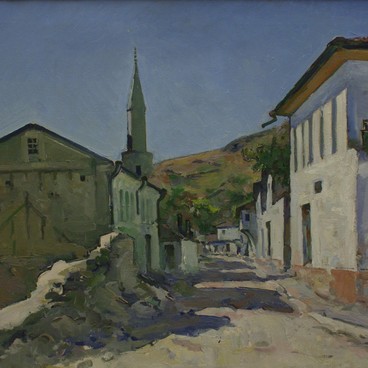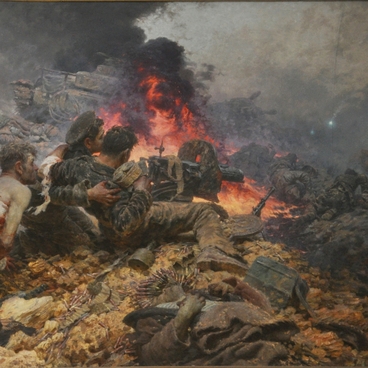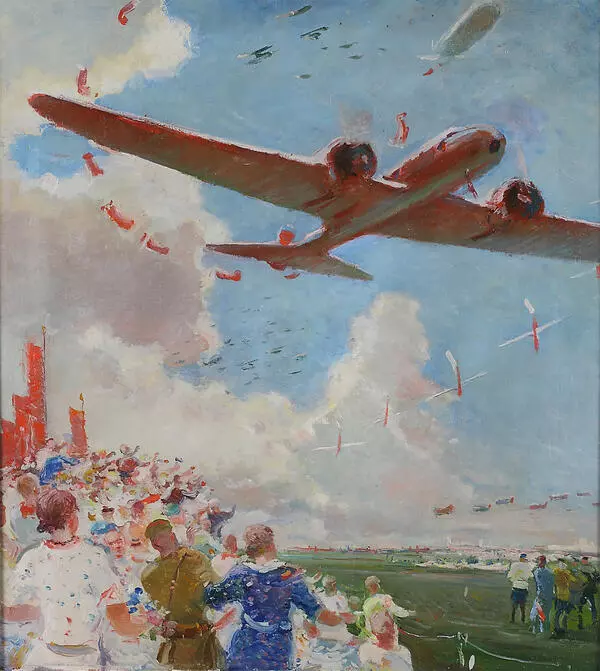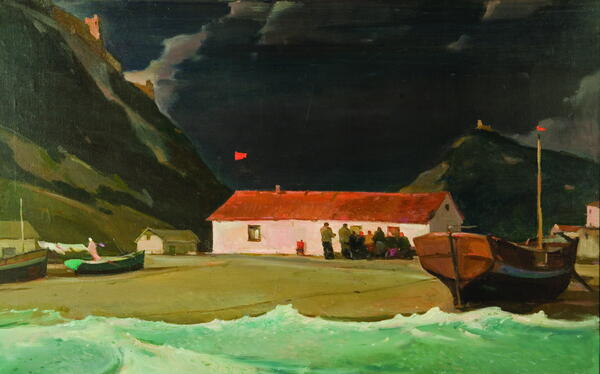Soviet painter Georgy Grigorievich Nissky was born to a doctor family in a small settlement near Gomel in 1903. The aspiring artist took his first painting lessons from Vladimir icon painter Petrov. In 1919, Georgy Grigorievich Nissky entered the Gomel Art Studio, then continued his studies at the Higher Art and Technical Studios in Moscow. The formation of Georgy Nissky’s art took place under Russian painter Robert Rafailovich Falk (1886-1958) and Soviet artist Alexander Davydovich Drevin (1889-1938).
A great impact on the formation of Georgy Nissky’s style was made by his acquaintance with Soviet painter, muralist and graphic artist Alexander Alexandrovich Deyneka (1899-1969) and communication with representatives of the Society of Easel Painters, an association founded by graduates of the Higher Art and Technical Studios.
After graduating, Georgy Nissky travelled a lot around the Soviet Union and regularly participated in numerous exhibitions. The favourite genre of Georgy Grigorievich Nissky was landscape. His early works were dominated by images of railways and vast steppe expanses, inspired by memories of his native Belarusian land.
During the Great Patriotic War, Georgy Nissky designed military posters; at the same time he created the paintings Sinking Fascist Transport, Canal Bridge, At the Pier. But perhaps the most striking canvas of that period was Defending Moscow. Leningrad Highway.
Georgy Nissky managed to develop his own unique style. The integral features of his works were dynamism, unusual compositional structure and combination of the beauty of nature with the grandeur of man-made buildings. He was charmed by ships prowling the oceans, planes flying into the distance and high-speed trains.
Thus, in the early 1930s, after visiting Sevastopol, Batumi and Odessa, the artist created paintings on the navy. A few years later were created In the Pacific and Port in the Far East, which the artist painted under the impression of the beauty of the ocean.
In the 1950s, Georgy Grigorievich Nissky turned again to landscape. With uncomplicated artistic means, he conveyed an anxious mood on the canvas Night. 1941 (1958). The artist conveys a sense of motion through lines: here they appear in the form of searchlight rays. Additional dynamics is added by the expressly vertical form of the canvas and low perspective.
A great impact on the formation of Georgy Nissky’s style was made by his acquaintance with Soviet painter, muralist and graphic artist Alexander Alexandrovich Deyneka (1899-1969) and communication with representatives of the Society of Easel Painters, an association founded by graduates of the Higher Art and Technical Studios.
After graduating, Georgy Nissky travelled a lot around the Soviet Union and regularly participated in numerous exhibitions. The favourite genre of Georgy Grigorievich Nissky was landscape. His early works were dominated by images of railways and vast steppe expanses, inspired by memories of his native Belarusian land.
During the Great Patriotic War, Georgy Nissky designed military posters; at the same time he created the paintings Sinking Fascist Transport, Canal Bridge, At the Pier. But perhaps the most striking canvas of that period was Defending Moscow. Leningrad Highway.
Georgy Nissky managed to develop his own unique style. The integral features of his works were dynamism, unusual compositional structure and combination of the beauty of nature with the grandeur of man-made buildings. He was charmed by ships prowling the oceans, planes flying into the distance and high-speed trains.
Thus, in the early 1930s, after visiting Sevastopol, Batumi and Odessa, the artist created paintings on the navy. A few years later were created In the Pacific and Port in the Far East, which the artist painted under the impression of the beauty of the ocean.
In the 1950s, Georgy Grigorievich Nissky turned again to landscape. With uncomplicated artistic means, he conveyed an anxious mood on the canvas Night. 1941 (1958). The artist conveys a sense of motion through lines: here they appear in the form of searchlight rays. Additional dynamics is added by the expressly vertical form of the canvas and low perspective.






